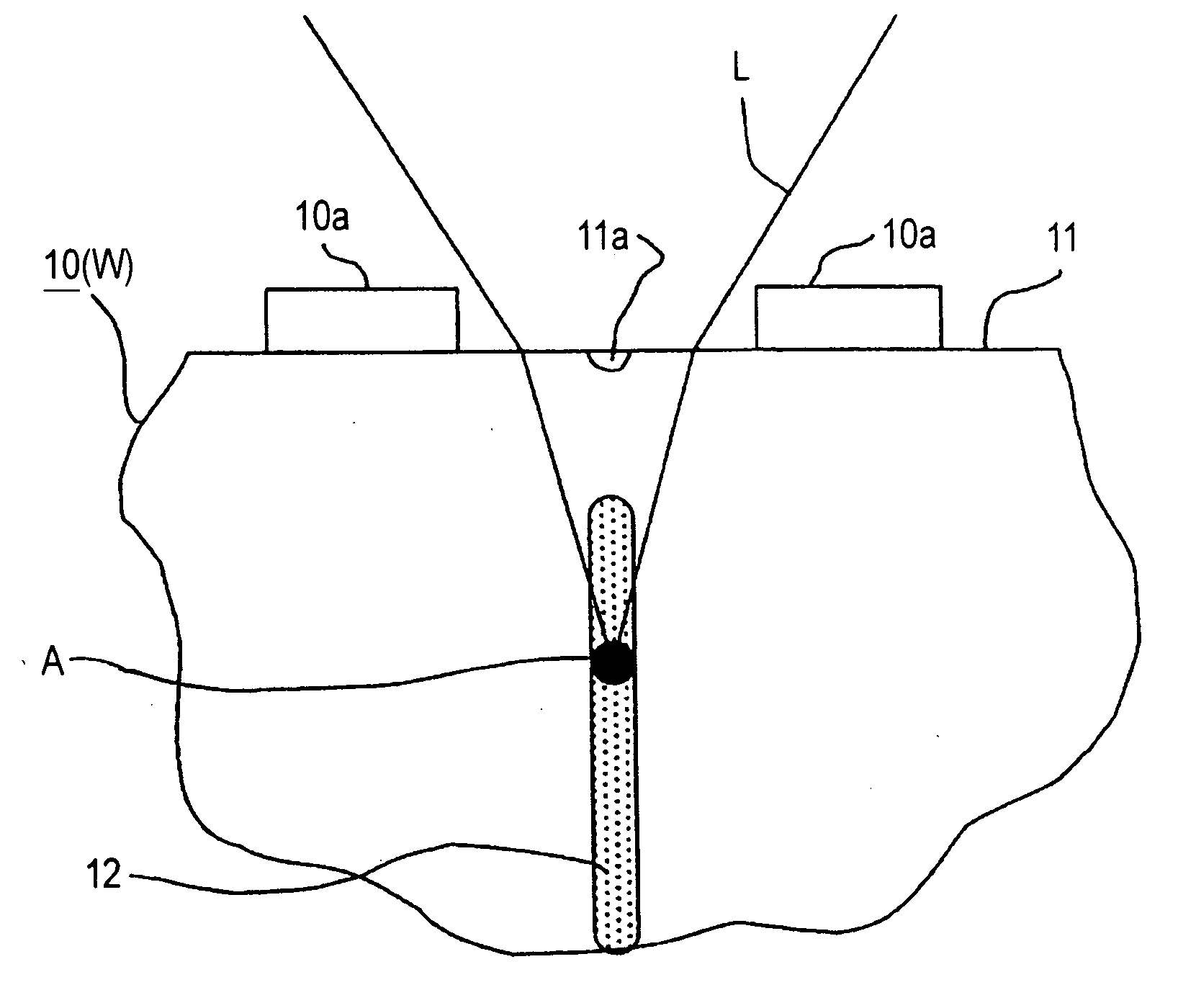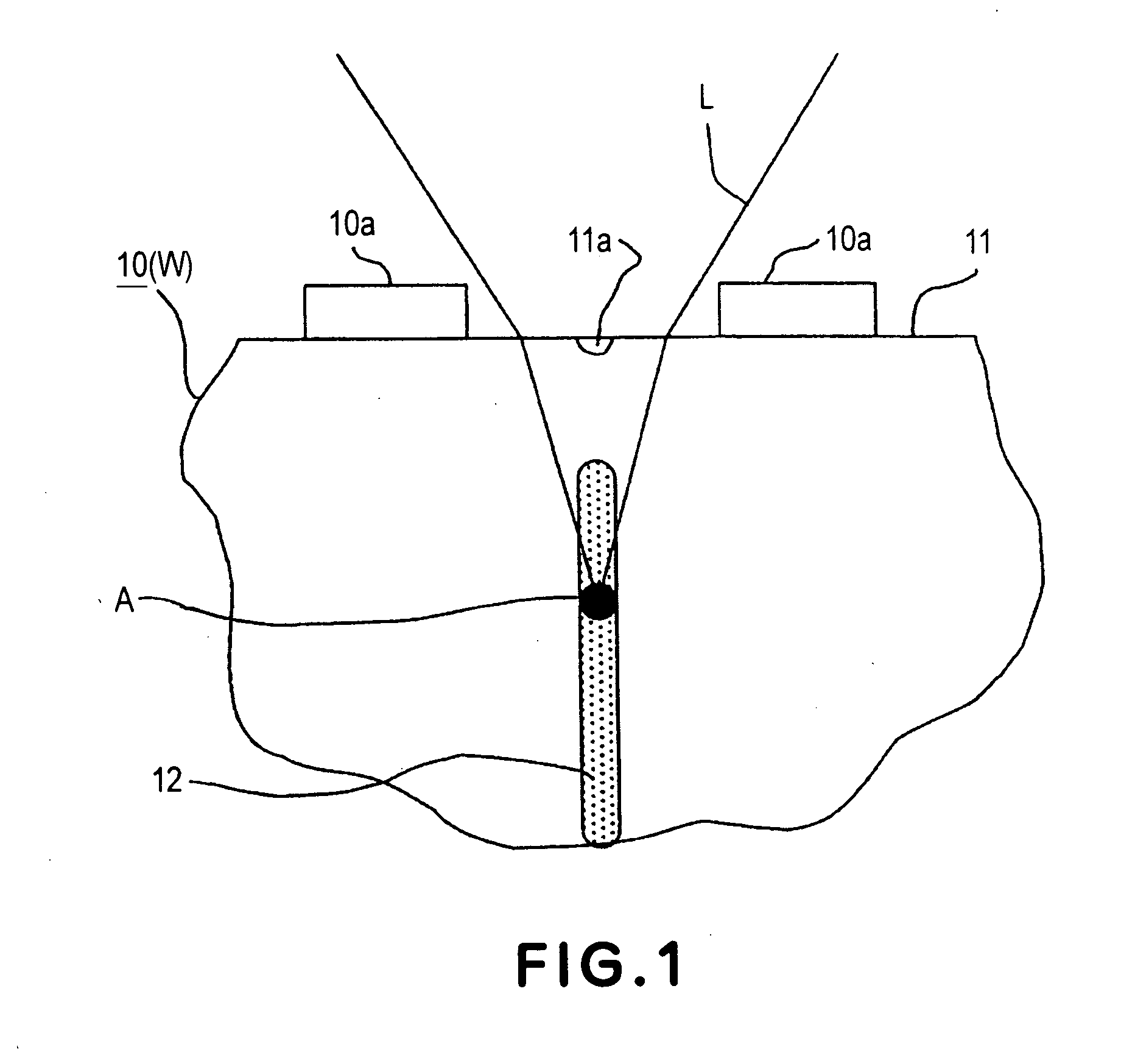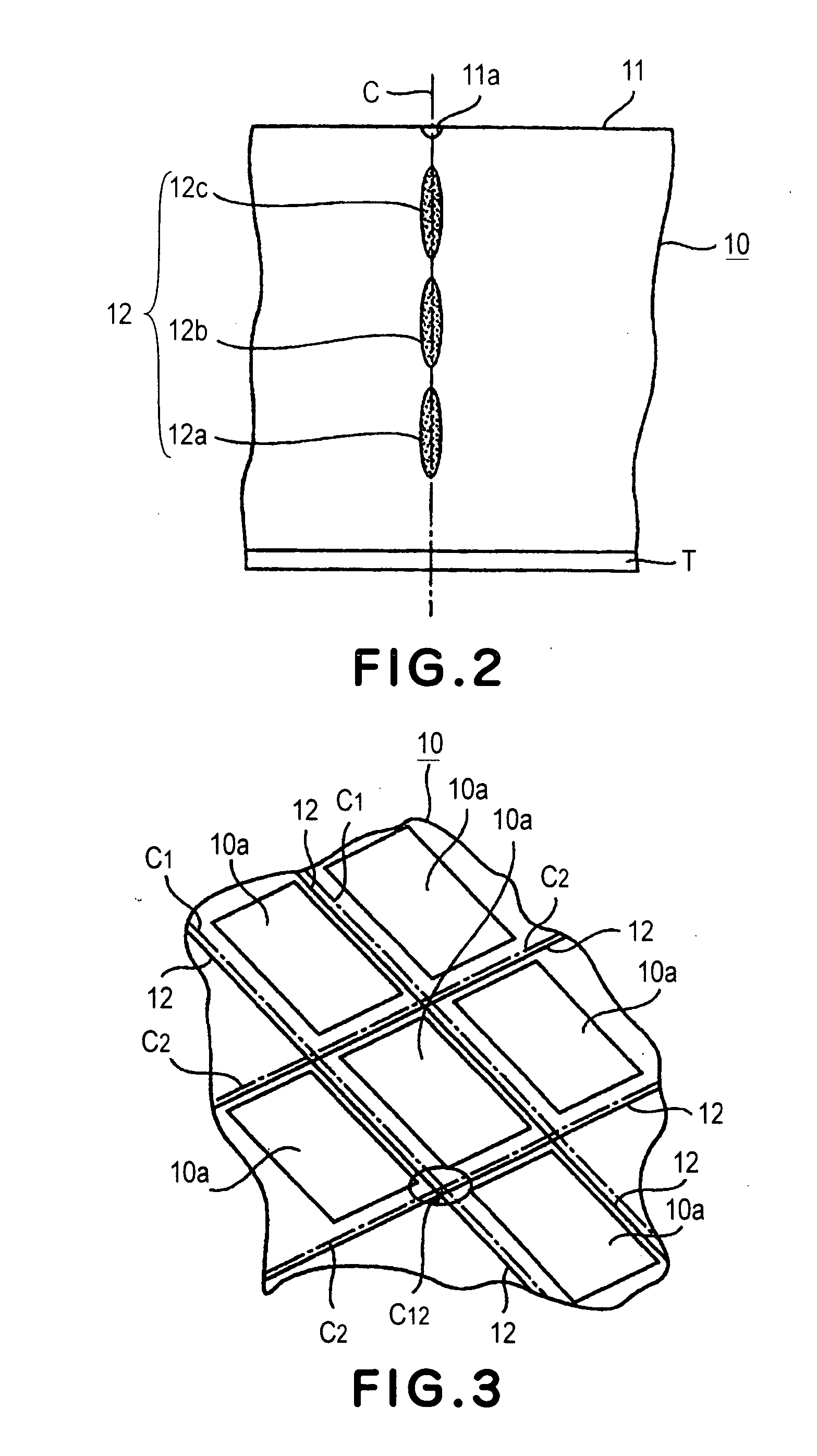Laser based splitting method, object to be split, and semiconductor element chip
a technology of laser based splitting and object, applied in the direction of manufacturing tools, semiconductor/solid-state device details, welding/soldering/cutting articles, etc., can solve the problems of affecting the efficiency of cutting, so as to improve the efficiency, safety, reliability
- Summary
- Abstract
- Description
- Claims
- Application Information
AI Technical Summary
Benefits of technology
Problems solved by technology
Method used
Image
Examples
embodiment 1
[0066] Next, the method for separating a plurality of element chips, as chips for forming an ink jet head, across each of which the structural components of an ink jet head, such as the circuit, as the logic element 10a, for driving an ink jet head, ink ejection orifices, etc., have been formed, from the silicon substrate 10, will be described.
[0067] The silicon substrate 10 shown in FIGS. 4(a) and 4(b) is formed of a silicon wafer 1 with a thickness of 625 μm, which is formed of a single crystal. Its top surface is parallel to the crystalline orientation (100) of the single crystal. Across the top surface of the silicon wafer 1, an oxide film 2 with a thickness of roughly 1 μm has been formed. On top of the oxide film 2, a plurality of nozzle layers 3 are disposed, which comprises the mechanisms for ejecting liquid such as ink, logic elements for driving these mechanisms, wiring, etc., making up a plurality of logic elements 10a, as shown in FIG. 4(c). Immediately below each nozzl...
embodiment 2
[0166] In the case of the silicon substrate 10, the surface layer of which is a film 2 of silicon dioxide, which is different from the primary substrate material, in order to ensure that the internal cracks are reliably formed, the amount by which a beam of laser light is reflected by the surface of the silicon substrate 10 must be minimized, because the primary cause of the energy loss is that the beam of laser light L is reflected by the surface of the silicon substrate 10.
[0167] Therefore, the silicon substrate splitting process in the first embodiment is partially modified.
[0168]FIG. 29 is a flowchart of the silicon substrate splitting process in this embodiment. The silicon substrate splitting process in this embodiment comprises: Step 1 for mounting the silicon wafer 1 with the use of adhesive tape; Step 2 for correcting silicon wafer 1; Step 3 for forming a light projection window; Step 4 for forming internal cracks; Step 5 for forming superficial grooves; Step6 for splitti...
embodiment 3
[0174] Referring to FIG. 32(a), the silicon substrate 20 in this embodiment has a plurality of logic elements 20a of an unusual shape, that is, logic elements unusually greater in the ratio between its long and short edges. When splitting this silicon substrate 20 by forming a plurality of internal cracks in the silicon substrate 20, and superficial scratch 21a in the top surface 21 of the silicon substrate 20, the frequency with which the logic elements 20a are damaged while splitting the silicon substrate 20 following the intended splitting line C1, which is parallel to the longer edges of the logic element 20a, is likely to be greater than the frequency with which the logic elements 20a are damaged while splitting the silicon substrate 20 following the intended splitting line C2.
[0175] In particular, if the silicon substrate 20 is such a silicon substrate that holds a plurality of logic elements 20a, each of which is covered with an orifice plate having a liquid ejection orifice...
PUM
| Property | Measurement | Unit |
|---|---|---|
| thickness | aaaaa | aaaaa |
| thickness | aaaaa | aaaaa |
| size | aaaaa | aaaaa |
Abstract
Description
Claims
Application Information
 Login to View More
Login to View More - R&D
- Intellectual Property
- Life Sciences
- Materials
- Tech Scout
- Unparalleled Data Quality
- Higher Quality Content
- 60% Fewer Hallucinations
Browse by: Latest US Patents, China's latest patents, Technical Efficacy Thesaurus, Application Domain, Technology Topic, Popular Technical Reports.
© 2025 PatSnap. All rights reserved.Legal|Privacy policy|Modern Slavery Act Transparency Statement|Sitemap|About US| Contact US: help@patsnap.com



